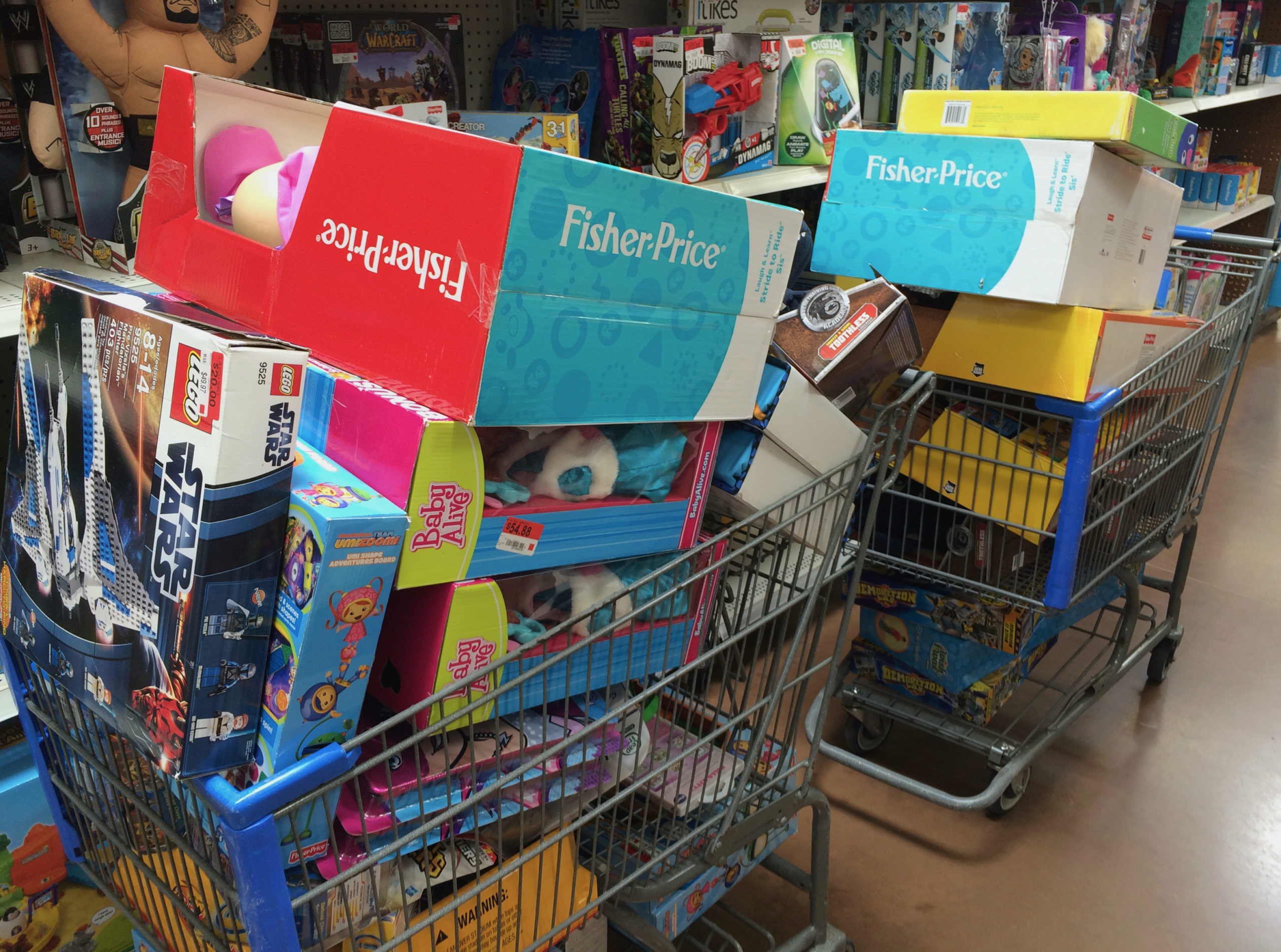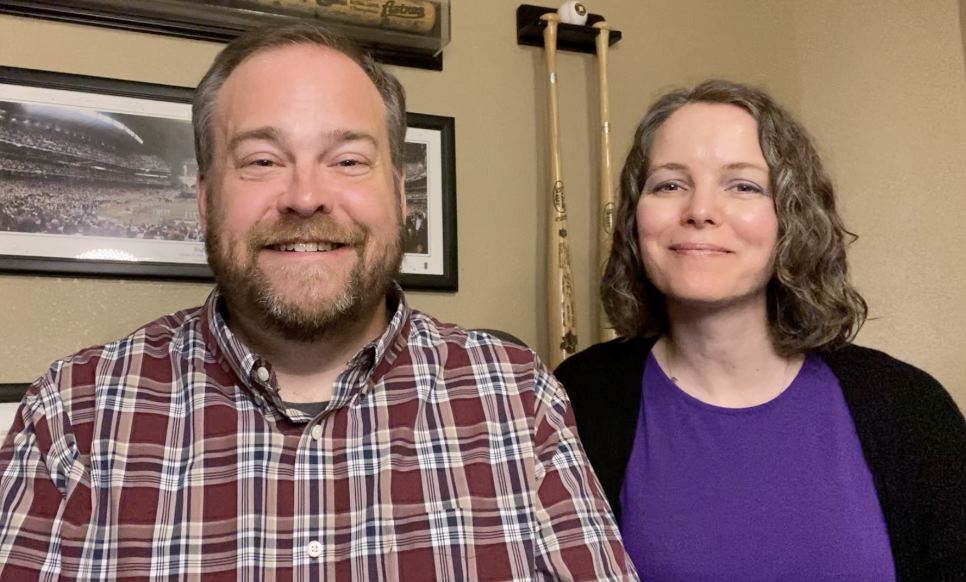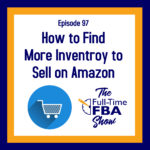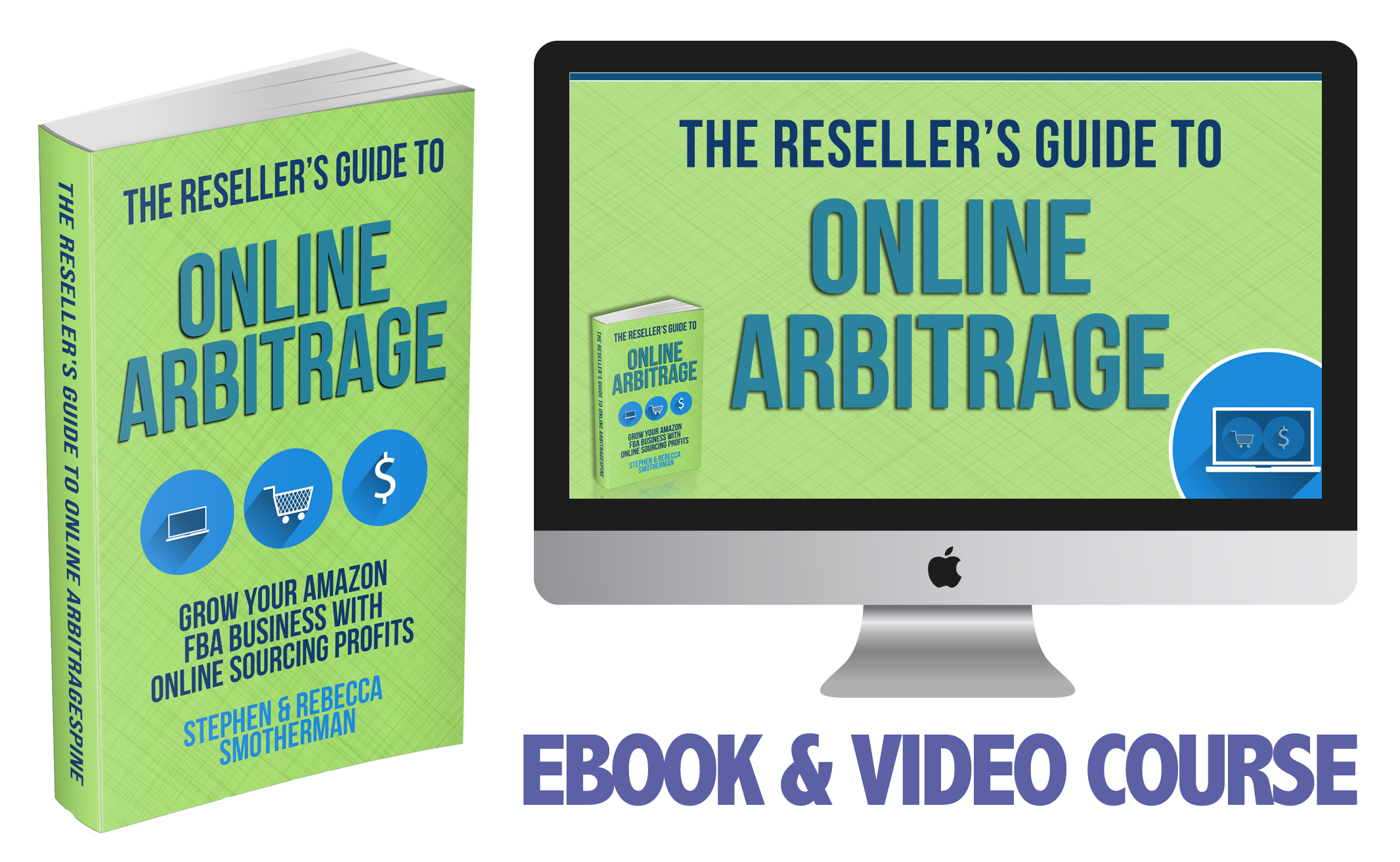If you feel like you are in a rut when it comes to sourcing inventory, then this episode is especially for you. While it’s good to get into a routine of what you buy and where you source goods, it can limit your options and cause you to lose out on potential selling opportunities. In today’s episode, we talk about seven ways to find more inventory to sell on Amazon.
From expanding the categories of items you are selling to trying your hand at new sourcing strategies to reviewing how you decide on a product, there are many profitable strategies you can use to boost your inventory. Tune in to hear all the details!
Listen on the podcast player below.
Like what you hear? Tell a friend… and be sure to leave us a rating and a review. Here’s how.
Key points from Episode 97:
 Expand to source additional Amazon categories to increase your money-making opportunities.
Expand to source additional Amazon categories to increase your money-making opportunities.- Don’t just source the same stores all the time. Find new stores that you can source from because more stores mean more possibilities.
- Revisit old brick-and-mortar and online stores that you may have written off. They might be a gold-mine now.
- Try new sourcing strategies to get out of your rut.
- Rethink your decision-making process when you are purchasing inventory to sell on Amazon. Once tweak might help you find more inventory to sell.
- Look into Amazon deal lists to get more leads on what to buy.
- Don’t make any assumptions when you are outsourcing. Scan everything!
- And more!
Links and resources mentioned in this episode:
 Amazon category list and what you’re approved to sell
Amazon category list and what you’re approved to sell- Category Ungating Training Course – Use code FT20 to save 20% off.
- OAXray – This tool is no longer available. Now we recommend Tactical Arbitrage which is actually a superior tool
- Free OA Tips ebook
- $0.99 The Beginner’s Guide to Wholesale Kindle book
- Free Kindle reader apps for computers and smart devices
- Our most recommended Deal Lists
- Leave a review for the Full-Time FBA Show
Right-click here and save as to download this episode to your computer.
 More Episodes from the Full-Time FBA Show podcast:
More Episodes from the Full-Time FBA Show podcast:
Don’t miss an upcoming episode! Subscribe, download episodes, and review the Full-Time FBA Show:
-
-
- Subscribe on iTunes
- Follow on Spotify
- Follow on Amazon Music (or just ask Alexa to “play The Full-Time FBA Show podcast”)
- Follow on iHeartRadio
- Subscribe on Podbean
- Subscribe on Podbay
- Subscribe on Podchaser
-
![]()
FINALLY MASTER ONLINE ARBITRAGE
If you want to add or improve your existing online arbitrage (OA) sourcing skills, then check out our course: The Reseller’s Guide to Online Arbitrage: Grow Your Amazon FBA Business With Online Sourcing Profits.
The course is a combination video course (5+ hours of OA training) and a 100+ page ebook. The videos and book both share the exact same content (so you can pick the format you most like to learn from). The course also comes with six time-saving and money-making bonuses all at no additional charge!
As a Podcast Perk use the code ONLINE10 and we’ll take $10 off the cost of the OA course (limited-time coupon code).
![]()
Back to the main page for The Full-Time FBA Show
![]()
Episode 97 Transcript:
 [WELCOME]
[WELCOME]
[0:00:01.8] ANNOUNCER: Welcome to The Full-Time FBA Show. In each episode, it’s our goal to help you turn part time hours into a full-time income, selling almost anything on Amazon. Now, your hosts of the show, Stephen and Rebecca Smotherman.
[INTRODUCTION]
[00:00:20] STEPHEN: Welcome to episode number 97 of The Full-Time FBA Show. Today, we’re talking about inventory and how to find more inventory. With me to talk about this is my wife, Rebecca. What is up? Are you ready to talk about inventory?
[00:00:34] REBECCA: I am ready or not here for this podcast? Yes, I’m ready.
[00:00:39] STEPHEN: Ready or not –
[00:00:39] REBECCA: To be clear.
[00:00:40] STEPHEN: Here we are. Giving you some ideas on how to find more inventory for your Amazon business.
[CONVERSATION]
[00:00:49] REBECCA: As Stephen mentioned, at the top of the show, today, we’re going to be talking about how to find more inventory to sell on Amazon. Maybe you are feeling stuck, you have gotten into a rut and you’re not finding as much as you did at one point to sell, you might be running into a situation where places that you sourced in the past are just not providing the same types of inventory, whether it’s amounts of inventory, or the same ROI as it did in the past.
There’s a lot of reasons why you might be feeling I just need to know how to find more inventory. I’m needing more inventory right now. So we’re going to talk about some of the ways that you can solve that problem, and you can find more inventory to sell on Amazon. So why don’t you start us off, Stephen, what is the first way that you can think of that we can find more inventory to sell on Amazon and this is something that we personally, all of these are things that we personally go through on a regular basis for our Amazon business.
[00:01:41] STEPHEN: Yeah, some of these you’ve probably experienced before yourself. Some of them, you might even already know that you need to do but you need someone to remind you to go do it. Here are some things that will help find you more inventory. The first one is expand to more Amazon categories. I mean, a lot of times when people start selling on Amazon, they focus on selling toys, or selling books or selling an item that they know a lot of information about and they really know that market. Well after a while you might not be able to find as much from those categories as before, so you need to expand, expand to a grocery category or home and kitchen or something else that could really give you a really great money-making opportunity.
Get out of your rut. If you’re curious what categories you’re approved to sell in, you can go to fulltimefba.com/whatcanIsell. I will give you an idea of what categories you’re approve to sell in, what you’re not, and give you ideas of the other categories that are even out there. But expanding to other categories, while it will get you out of your comfort zone, it might also help you find more inventory to sell on Amazon. Then you start working that new category in your comfort zone and have a nice steady stream of inventory sources moving forward.
[00:02:52] REBECCA: Yeah, that’s always a really good when good way to look and see different places that you’re already sourcing. It opens up your eyes to stuff that’s, just right there in front of you, but you’re just not aware of it, because you aren’t usually sourcing in that category, whether it’s because you aren’t familiar with it as much. It’s not – Yeah, like you said, it’s not your comfort zone, but there’s stuff just right in front of us all the time, when we’re sourcing that we just skip over because it’s not what we’re used to.
On that same note, we could say also that you could in addition to expanding to new categories, you can expand to new stores to source that. You might be in a place where you just gotten used to sourcing at a handful of stores, even some people have one or two stores that they predominantly source at and that can be very lucrative. I know for a period of time, I had one store in particular that I was getting pretty much 90% if not more of my OA shopping done at this one store and it can be great until it’s not and then you need to expand and find some ways to find other sources.
So whether you’re doing RA or OA, and you need to find new retail stores to shop at or if you’re doing wholesale, and you just need to find some new suppliers, new brands to contact, look into expanding to new stores. If you’re doing RA on a regular basis and you make a beeline from your house to a certain part of town, mix things up and go to a different part of town. If you do OA and you have a set of tabs that you open up every day. That’s where you just default go to for your sourcing, look into some different stores. One trick that I have done in the past just to get out of my rut for OA in particular is, you can go to Oaxray, that’s a scanning software, an extension a Chrome extension that we use to scan sites for OA matches and the Amazon catalog.
They have a tab that gives you a list of all of the stores that will work with their software, and it’s hundreds. So just go to that link, on that tab on the Oaxray website and just start looking through it and thinking, what are stores I’ve heard of that I haven’t tried either in a while or ever? And then even look into it, what are some of the stores, it’s like, what is that? I’ve never even heard of that website before. You will find that there are tons of ideas out there for you to find new stores to source that.
[00:05:20] STEPHEN: Yeah, absolutely. So, the more stores that you can go and source at the stuff that you’ve heard of before, stuff that you haven’t heard of before, the chances are, you’re going to find more inventory to sell. Another strategy that you can use to find more inventory to sell on Amazon is revisiting old stores that you’ve written off. A lot of times for us, our experience really does influence our current behavior. So if you’ve been to a store before, and you’re like, “I couldn’t find a thing there at all, I left with an empty cart. I feel like I wasted my time.” It’s not very likely, you’re going to go back to that store. But you might have just had a bad day, that store might just not have been at the right place where you needed to find the inventory.
So it’s possible, that stores still profitable. I know, one time, I went to Big Lots, and I could not find anything, I tried Big Lots again, I couldn’t find anything, not much at all. So I just rode Big Lots off and we moved on to other stores and stuff. I remember seeing someone saying online that they had this huge pile of Big Lots. I was like, “Well, I’m going to go try it again.” I went to Big Lots. Yes, I loaded up an entire cart full of stuff to sell on Amazon. I was like, I missed out like on years of sourcing on Big Lots, because I just wrote it off. So if you’ve had a bad experience at a place before, try it again and keep that in your rotation of stores to go to and try every once in a while. Again, this matches up with the last point going to new stores. Maybe you’ve had a bad experience at one store. Try it again, it might work out this time.
[00:06:46] REBECCA: Yeah. I would say the same thing goes for online shopping, online sourcing as well. If you’ve had if you’ve scanned a website or tried to do manual OA on a website before and you’re like, “Yeah, there’s nothing here.” But you hear other people saying that they’re finding stuff there. Or you just really have a feeling that you need to branch out again into that store. Just try it again. and see, you might open up a new goldmine there, where there’s inventory that you just missed last time, or they’ve gotten new inventory in something might have changed from the last time you did it. You might be able to find something online as well.
[00:07:21] STEPHEN: Yes.
[00:07:21] REBECCA: In that same strategy. Along the same lines is that you could try different sourcing strategies in order to find more inventory in all ways we get in ruts in our business. Sometimes it’s good to have a routine and you just know, “Today this is what I’m going to do. This is what I do every day.” I’m going to do this, I’m going to get it done and it’s going to be great. It’s been profitable in the past, it will continue to be profitable for the foreseeable future, but then there’s other times where it’s like, “Okay, this was working, and now it’s not.” So you have to look around and see and sometimes it’s your sourcing strategy. Sometimes it is that you do all RA, and you need to mix it up by throwing in some OA as well.
If you are new to that, if you’re new to doing online arbitrage, you haven’t really looked into it in the past, we have a free ebook guide that you can download from our website fulltimefba.com/oatips and that will give you some places to get started with doing online arbitrage, if you’ve not tried that, in the past. if you’ve already been doing RA and OA, especially OA and you’re looking for something to mix things up into give you a new source of inventory, you might try wholesale.
I think that going from online arbitrage to wholesale is such a natural step, because there’s so many similarities between it. If you are wanting to get started with wholesale, we have a Kindle Book that is 99 cents, you can download at fulltimefba.com/wholesaleguide that will take you to the page for that Kindle Book. Look into some of these free or very close to free resources. If you’re wanting to find out ways to get started in a new sourcing strategy that will mix things up and get you thinking and get your eyes on some inventory that you haven’t really looked at in the past, so that you can add it to your Amazon FBA business.
[00:09:10] STEPHEN: Yep, definitely some good strategy is to try out. Another way that you can find more inventory to sell on Amazon might just be in your decision-making process. A lot of times when we’re outsourcing, we have an idea of what type of sales rank parameters we want, what type of return on investment parameters that we need to have in order to purchase something to sell on Amazon? Well, one strategy to find more inventory might be to lower your ROI parameters. ROI stands for return on investment, and it’s the type of income that you get back after fees for the items that you’re selling on Amazon.
So obviously we want to make money, but many people when they first start off selling on Amazon, they think, “I need to make 100% ROI.” I need to double my money. I need to have this really big buffer when it comes to how much wiggle room I have to maybe lower my prices in case the price tanks and so a lot of people continue sourcing that way and, and they’re not able to find inventory, they still see something that they can have a 50% ROI on or a 40% ROI, but they’re passing on it, because they want a 100% ROI, double your money situation. That just doesn’t always happen. You’re going to be able to find more inventory if you lower your ROI parameters.
So I know it’s all comes down to a comfort zone. Whatever your ROI parameters are right now, maybe decrease it by 10, or 15%, and see how that works out for you and test it out. I mean, we’re at a point right now in our business where we can be pretty comfortable with a 15 to 20% ROI that’s –
[00:10:35] REBECCA: That’s on certain categories –
[00:10:36] STEPHEN: Right, on certain categories, right.
[00:10:37] REBECCA: I would put some caveats on everything you’re saying right now, like a lot of that has to do with category too.
[00:10:43] STEPHEN: Right. It’s your personal preference. We try things out with different categories and different ROI requirements. So find out what works best for you and you’ll able to find more inventory, if you just maybe decide to make less money, you’re still going to make money, but maybe make a little less money, but it’s still profit in your pocket.
[00:10:59] REBECCA: Yeah, and you’ll definitely need to know your numbers in order to make that decision, because just saying, I’m going to lower my ROI and find more inventory doesn’t necessarily lead to a profitable business. So when I say it depends on the category, like the thing that stands out to me in particular is like the shoes category or clothing. Something where you have a higher rate of return than in other categories, you’re going to need to work some other fees and things into your calculations, so that you might need a higher percentage ROI on those items, so that you are still making money.
But definitely, even with selling shoes, I started out, only sourcing 100% ROI on shoes in got down to like 50% over time, where I was really comfortable finding 50% ROI shoes to resell, but I wasn’t right away. I don’t know that I would go much lower than 50%, though and feel comfortable with in that category, but other categories, if I found something that I was getting a 50% ROI on that would be amazing.
[00:12:00] STEPHEN: Yes, absolutely.
[00:12:02] REBECCA: Alright, so the next way that we would to suggest that you could find more inventory to sell on Amazon is to try out Deal Lists. Now Deal Lists are a subscription based service where you are getting a list of leads, whether it’s on a daily basis, weekly, monthly, they all work differently. You’re getting a list of leads from somebody who has put in the time and the work to find matches between either a retail store or an online store, and the Amazon catalog, and they give you these leads, and you then can analyze the lead and see if it fits your sourcing parameters and you can buy that those items.
Now, Deal List are not a buy list. We recommend using Deal Lists as a jumping off point. This is a type of service that we have used for years, not just one particular service, but a type of sourcing methods. Using a Deal List is a method that we have used for years even to this day. I have a list that I check every day and it gives me a jumping off point of some ideas of actual inventory that I can buy, that I do buy on a regular basis from these lists, but then also we use it to chase rabbit trails. That can mean any number of things chasing a rabbit trail in online arbitrage. It usually has to do with coupon codes, time sensitive sales, related items that are also on sale to the items on the list.
Those kinds of things are what you’re looking for in rabbit trail. That doesn’t just apply to OA. I think Deal Lists are probably more skewed towards OA, but there’s also some really good RA lists out there and bolo type groups out there, that you can get involved in that can really give you some ideas for how to find more inventory. If you’re just like, I’ve got money to spend, I just don’t have the time to track it down or the know how to track it down. I need just a little push a little start. You can look into that.
We have another podcast episode on that topic exclusively. It’s episode number 60. You can find that at fulltimefba.com/60. Also, we have on our website, a page that gives you our list of recommended Deal Lists. That list changes from time to time. So, you’ll want to check it out. Even if you’ve looked at it in the past, you might go and see that we’ve added something on there. These are the current Deal Lists or groups that we recommend that we have found to be reputable and profitable. You can find that at fulltimefba.com/deallists.
[00:14:25] STEPHEN: The final way to find more inventory and not just the final meaning there’s no other ideas, but the final one that we’re going to talk about today is to scan everything. I mean, don’t make any assumptions when you’re outsourcing. I’m talking mostly about retail arbitrage. A lot of times we’re walking down the aisle, maybe it’s a clearance aisle or another part of the store and you just with your own brain make your own assumptions on whether or not you think that item is going to be profitable.
Many times you can be assuming very incorrectly you might miss out on an opportunity for some way to make a nice chunk of cash, because you assume something is not profitable. I’ve given this example before on webinars and even on this podcast before, but remember outsourcing a clearance section, and I found a piece of plastic with a sticker on it, it was a toy, it was a plastic toy, and it had a sticker on it.
[00:15:13] REBECCA: When he says a piece of plastic, it was literally just a piece of plastic. It was not molded into the shape of a doll, or even a ball or anything like that, just plastic.
[00:15:22] STEPHEN: Just a piece of plastic. I’m like, “Yeah, there’s no way this is going to be profitable.” But I scanned it. I could buy it for three to $5 and was able to sell it for 50 to $80. I was able to buy multiple, because everyone else assumed that was not a profitable item. So I was able to go to other stores of the same name, and find more pieces of plastic with a sticker on it. I was just dumbfounded I was oh my goodness. So it just taught me the lesson. Scan everything, don’t make assumptions and you might be able to find more inventory that way.
So those are seven ideas for you to go out and find more inventory to sell on Amazon. Some of them you probably already knew, some of them you didn’t. Take one of those and run with it, find more inventory, put in the time and effort, commit to the marathon mindset of making it through all the way to the end and find that inventory to send to Amazon as soon as possible.
[00:16:19] REBECCA: Thank you so much for joining us for today’s episode of The Full-Time FBA Show. We’re so glad you’re here. We want to remind you as always that if you heard any links mentioned in this episode that you want to check out or if you want to see the transcripts for this episode, it is at fulltimefba.com/97. That’s the show notes page for this episode number 97 of The Full-Time FBA Show.
[00:16:44] STEPHEN: I want to do a special thank you to Sally who left us a five-star review for The Full-Time FBA Show. She said in her review, “Start here if you want to sell on Amazon.” About our podcast, she said, “Everything you need to know about selling on Amazon can be learned by listening to this podcast, and implementing the steps laid out by Rebecca and Stephen. They walk you through literally everything you could ever know to be successful. I’ve learned so much from them. I’ve been doing this for more than two years. I now realize how little I knew before I got started listening to this podcast. The information and guidance they provide is going to take me to the next level and get me to where I want to be in my business.”
She goes on and continues to rave about us. thank you so much Sally, the fact that you’re listening to the episodes, taking the action and finding the success. You’re putting that hard work into it and we’re just glad to be a part of that success. If you want to leave us a review, please do so you go to fulltimefba.com/leaveusareview and I’ll show you exactly how to leave reviews. But if you already know how to leave a review, you can go to your podcast provider of choice and leave us a review and we would much appreciate that.
Next week on the full time FBA show we are going to be talking about is selling on Amazon a saturated business model. Are there too many sellers? Is it even worth selling on Amazon anymore? We’re going to talk about that and more on the next episode of The Full-Time FBA Show. We’ll see you there.
[END OF EPISODE]
[00:18:05] ANNOUNCER: That is all for this episode of The Full-Time FBA Show. Head over to fulltimefba.com/podcast, where you will find the shownotes and links from this episode. While you’re there, subscribe to our newsletter where you’ll get several free downloads of our popular and helpful Amazon FBA resources. Now, take action on what you have learned today, so you can find success at turning part-time hours into a full-time income with Amazon FBA.
[END]


Leave a Reply